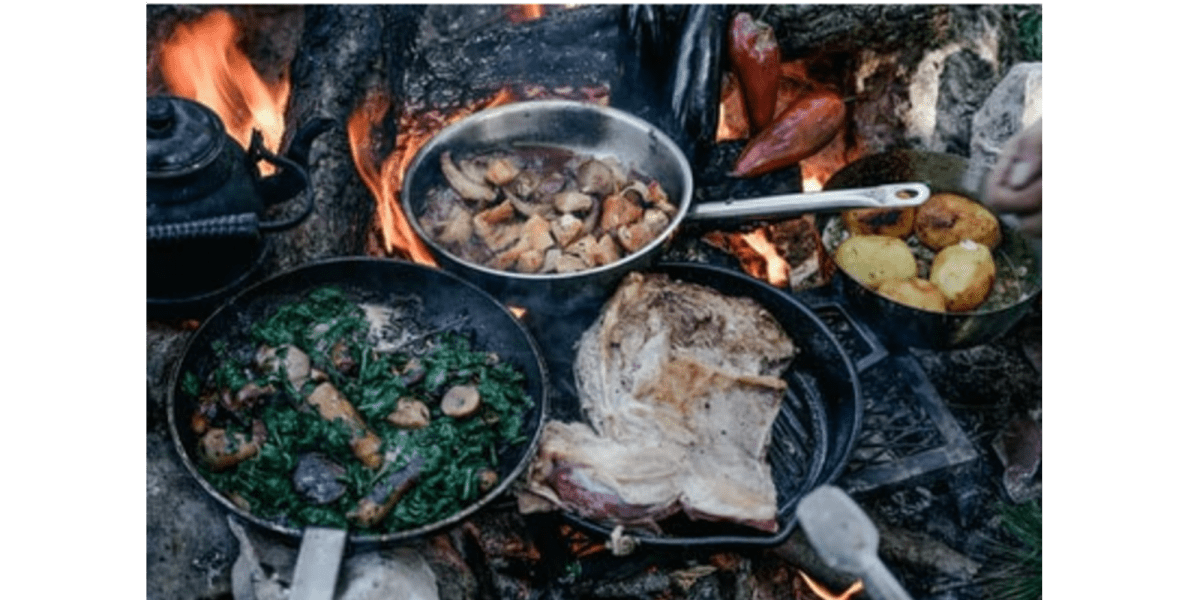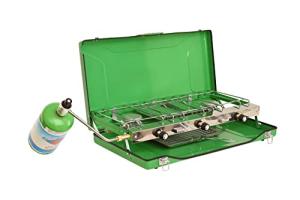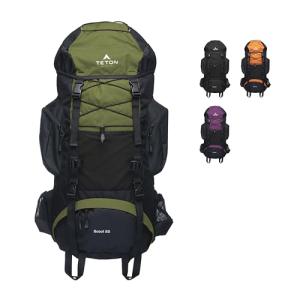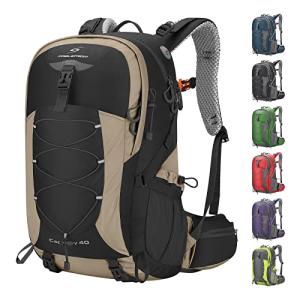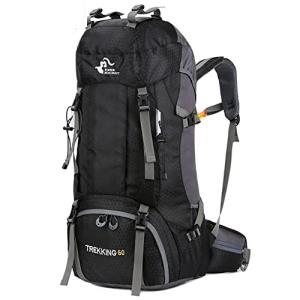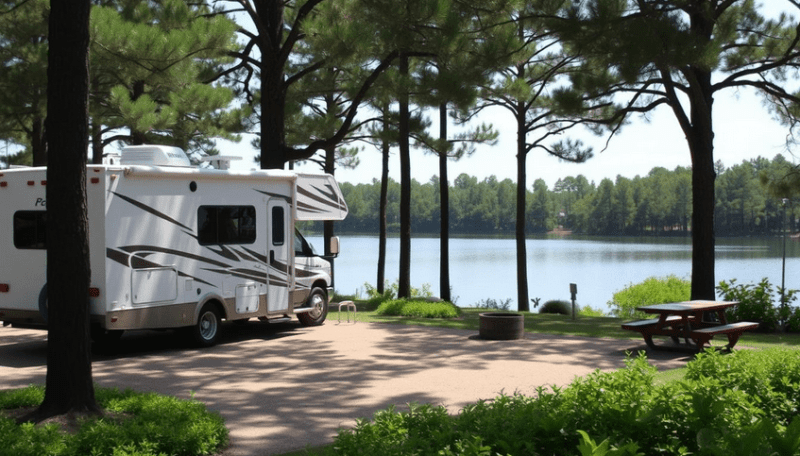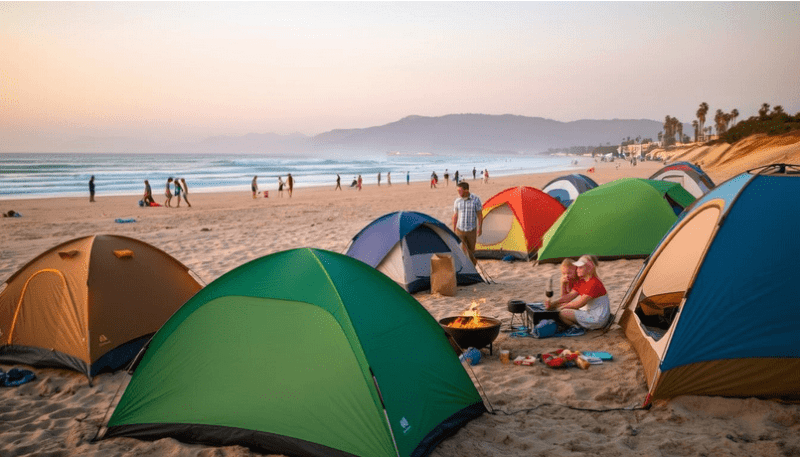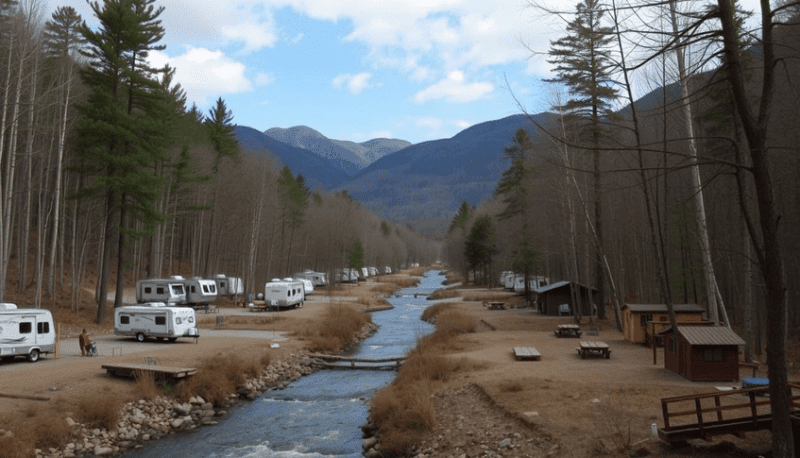Cooking over a campfire is an exciting way to enjoy the outdoors and create delicious meals. With the right approach, beginners can quickly learn the skills needed to make their campfire cooking a success. From selecting the perfect spot for the fire to choosing the right tools, each step is key to mastering campfire cooking.

A successful campfire meal doesn't just happen by chance. Preparation is essential to ensure you have the necessary tools and ingredients ready to go. Proper planning is crucial to making sure every meal cooked over a campfire is both delicious and safe.
By understanding basic cooking techniques and using suitable campfire methods, anyone can create tasty dishes that delight everyone around the fire. Whether it's a simple marshmallow roast or a full meal, getting comfortable with different outdoor cooking options will enhance the overall camping experience.
Key Takeaways
- Preparation is key to successful campfire cooking.
- Understanding different cooking techniques leads to better meals.
- Having the right tools improves the cooking experience.
Preparing for Your Campfire Cooking Adventure

To start campfire cooking, it’s important to choose a suitable spot, gather essential tools, and understand safety guidelines. These steps ensure both a fun and safe outdoor cooking experience.
Choosing the Right Location
Finding the perfect spot for campfire cooking is key. He or she should select a flat, open area, away from trees and brush. This helps minimize fire risks and ensures enough space for cooking activities. Checking fire restrictions in the area is also important. Campers need to make sure fires are allowed and safe during specific seasons.
It's also crucial to consider the wind. Setting up in a sheltered area can prevent the fire from spreading or going out. Bringing a small fire pit or using established fire rings can help contain the fire, keeping the campsite cleaner and safer.
Gathering Cooking Equipment
Choosing the right cooking equipment can make campfire cooking easier and more enjoyable. They should opt for lightweight, portable items. Important tools include a sturdy grill grate, fireproof gloves, and long-handled utensils. A cast-iron skillet or Dutch oven can be invaluable for versatile cooking.
Packing essentials like aluminum foil, tongs, and a fire starter kit can enhance the experience. Consider using a cooler to keep perishable ingredients fresh. Campers might bring biodegradable soap and scrub pads for easy cleanup. Having the right gear ensures every meal is a success.
Safety Tips and Fire Management
Fire safety is a must during outdoor adventures. Keeping water or a shovel nearby to extinguish the fire is essential. They should also build a fire by layering kindling, tinder, and logs properly. Controlling the fire size helps maintain safety and heat levels for cooking.
Leaving no trace is vital. They need to ensure the campfire is completely out and clean up all waste. Campers should carry trash bags to pack out any leftovers or garbage. Sticking to these habits protects natural sites and makes future camping trips enjoyable for everyone.
Starting Your Campfire
Building a campfire properly is crucial for cooking effectively outdoors. This section will cover essential techniques and tools needed to start a fire efficiently and safely.
Fire Building Techniques
Creating a good campfire begins with a solid structure. Tepee, log cabin, and lean-to are popular formations.
-
Tepee: Arrange sticks in a cone shape, leaving space for airflow. It's great for quick burning.
-
Log Cabin: Stack logs like Lincoln Logs, forming a square. This method is stable and burns slowly, providing lasting heat.
-
Lean-to: Lean smaller sticks against a larger log. This is simple and ignites fast, making it ideal in windy conditions.
Choose a firepit area clear of debris. Make sure it's away from tents and flammable materials. Aim for a safe space, using rocks to outline the pit for extra safety. Having a bucket of water nearby is wise for emergencies.
Using Tinder and Kindling Effectively
Tinder is essential for starting a fire; dry leaves, grass, or paper work well. Arrange your chosen tinder in the center of your structure. Light it carefully using a match or lighter.
Once the tinder is burning, add kindling (small sticks) gradually. The kindling should be dry and slightly thicker than tinder, helping to catch and spread the flame. Arrange them loosely to ensure airflow, feeding oxygen to the fire.
Avoid smothering the flames with heavy or wet wood early on. As the fire grows, add larger logs for sustained heat. Always monitor and adjust the fire to maintain its efficiency and safety.
Remember, managing your firewood is key for an enjoyable campfire cooking experience.
Essential Campfire Cooking Gear

Cooking over a campfire is both fun and practical when you have the right tools. Essential items include sturdy cookware like a cast-iron skillet, along with long-handled tongs for safety.
Cookware and Utensils
Good campfire cooking starts with choosing the right cookware. Cast-iron cookware is a favorite because it holds heat well and cooks evenly. A dutch oven is perfect for slow-cooked meals like stews or baked bread.
Grill grates or a portable grill are handy for barbecuing. They let you place food directly over the fire without needing a separate stove. Skewers are another useful tool, ideal for making kebabs or roasting marshmallows. Select skewers that are long enough to keep hands away from the flames.
Cooking utensils made of metal or heat-resistant materials work best around a campfire. Long-handled spatulas and tongs are crucial to protect from splattering grease and intense heat. Avoid plastic utensils as they can melt.
Protective Clothing and Accessories
Safety is key when cooking over an open flame. Heat-resistant gloves are a must to handle hot cookware without burns. These gloves are usually made from materials like silicone or leather, giving a good grip and safety.
Protective clothing like aprons or long sleeves can shield from spills and sparks. It's wise to choose materials that won't catch fire easily.
Hats with wide brims or bandanas can provide some protection for the face from heat and smoke. Having a sturdy pair of shoes reduces the risk of falling or slipping on uneven ground around the campfire. Remember, safety first ensures a more enjoyable cooking experience.
Mastering Cooking Techniques

Mastering campfire cooking begins with understanding several key techniques. By learning how to use direct heat, foil packets, grilling, skewering, and cooking with cast iron, beginners can make a variety of delicious meals in the great outdoors.
Direct Heat and Foil Packet Cooking
Cooking over direct heat is the most straightforward method. With firewood or charcoal, it’s easy to control the flame size. Direct heat is perfect for quick-cooking foods like sausages and burgers. This method delivers intense heat directly to the food, providing a nice char and rich flavor.
Foil packet cooking works great for vegetables, fish, and delicate items. Simply wrap ingredients in aluminum foil, seal tightly, and place them on hot coals. This method is convenient as it traps steam, which helps cook food evenly without drying it out. It’s also a great way to blend flavors as ingredients cook together in their own juices.
Grilling and Skewering
Grilling brings out deep flavors in meats and vegetables. Using a grill grate over the fire, food cooks evenly, with a delightful smoky taste. Adjusting the height of the grill helps control the cooking temperature, allowing precise cooking for different types of food.
Skewering is another fun and versatile campfire technique. Thread chunks of meat and vegetables onto skewers or sticks. It’s essential to use ingredients that cook at a similar rate to ensure even cooking. Rotate the skewers over the heat for even browning. This method is perfect for marinated meats, as the marinade provides an extra layer of flavor.
Dutch Oven and Cast Iron Skillet Methods
Dutch ovens are versatile for campfire cooking methods like baking, simmering, and frying. Made of heavy cast iron, they distribute heat evenly, making them ideal for stews, casseroles, and breads. Place coals on top and beneath for even cooking.
Using a cast iron skillet directly over the fire is excellent for sautéing, frying, or searing meats and vegetables. Cast iron retains heat well and provides a non-stick surface when properly seasoned. These tools are essential for crafting hearty, flavorful meals while camping, offering reliable performance and delicious results.
Campfire Cooking Methods

Cooking over a campfire creates unique flavors and experiences. This section offers tips on using minimal equipment and managing temperatures to cook delicious meals outdoors.
Preparing Food with Minimal Equipment
When camping, carrying fewer items is ideal. Using basic tools can still produce great meals. Foil packs are one simple way to cook. Wrap food like vegetables, meat, or fish in foil and place it on the coals. The heat cooks the food evenly.
Skewers are another good choice. Thread pieces of meat and vegetables onto sticks and hold them over the fire. For ease, use sturdy sticks or metal skewers.
Cast iron pans work well for various dishes. They are excellent for frying or baking due to even heat distribution. Choose items that are easy to clean and maintain. Using basic utensils like a knife and spoon is often enough.
Temperature Control and Cooking Times
Controlling temperature is crucial for campfire cooking. Begin by allowing the fire to burn down to hot coals. Coals provide more consistent heat compared to open flames.
Different foods need different cooking times. Use a hand test to estimate temperature. Hold your hand above the coals. How long you can keep it there indicates the heat level. If it's too hot for more than a few seconds, the heat is high.
Patience is key. Avoid rushing, as this can lead to unevenly cooked meals. Adjust the distance between the food and the heat source to control cooking speed. Using a thermometer can ensure meats are cooked to safe temperatures.
Creating Delicious Campfire Meals
Crafting delightful meals over a campfire is a rewarding part of any camping experience. With some clever planning and creative recipes, it's easy to cook tasty dishes that suit everyone's palate.
Planning Your Menu
Before heading into the wild, it's essential to plan your meals carefully. Consider the number of people, their dietary needs, and preferences. Opt for recipes that are simple yet tasty and do not require complex ingredients.
Preparing a list of meals like campfire nachos, foil packet meals, and banana boats can ensure variety. Organize ingredients into categories like perishable and non-perishable. Using a cooler for perishables can help keep them fresh throughout your trip.
Simple Yet Satisfying Recipes
Cooking by the campfire can be simple and satisfying with the right recipes. Campfire chili and campfire pizza are two great options. For chili, use a Dutch oven to simmer beans, ground meat, and spices together for a hearty dish. For campfire pizza, use ready-made dough, sauce, and favorite toppings.
Another easy choice is foil packet meals, where meat and vegetables are cooked together wrapped in aluminum foil. These can be customized for each person. Banana boats, made by stuffing bananas with chocolate and marshmallows, make a sweet finish to any meal.
Preparing Gourmet Meals in the Wild
For those looking to impress with gourmet meals, some preparation can go a long way. Start with creating a marinade for kabobs using a mix of spices and herbs. Marinate meat and vegetables before the trip. Grill these skewers over the fire for rich flavors.
A Dutch oven is ideal for making more complex dishes like stews or chili. Use quality ingredients like smoked meats or specialty cheeses to elevate these dishes. Add herbs and spices for a unique twist.
Making pizzas becomes gourmet by choosing interesting toppings like goat cheese or sun-dried tomatoes. These changes can bring a touch of luxury to your outdoor dining experience.
Food Safety and Hygiene
Proper food safety and hygiene are crucial in campfire cooking. Ensuring ingredients remain fresh and maintaining cleanliness can prevent illness and enhance the campfire cuisine experience.
Keeping Ingredients Fresh
Proper storage keeps ingredients fresh and safe. Campers should use a cooler with plenty of ice or ice packs to keep perishables like meat, dairy, and eggs at safe temperatures, ideally below 40°F.
Pack each food type in separate containers or ziplock bags to avoid cross-contamination. Place raw meat at the bottom of the cooler so it doesn’t drip onto other foods. Check the cooler’s temperature regularly and replace ice as needed.
Non-perishable foods like canned goods, dry pasta, and rice can be stored outside the cooler. Keep these items in a dry, shaded area to prevent spoilage from heat and sunlight.
Cleaning and Sanitation
Cleaning and sanitation help prevent foodborne illnesses. After handling raw food, it's important to wash hands with soap and water. If water is scarce, use hand sanitizer or disinfectant wipes.
Utensils and surfaces such as cutting boards should be washed with hot water and biodegradable soap. Rinse well after washing. To sanitize, mix one tablespoon of bleach with one gallon of water; use this solution to wipe surfaces and rinse again with water.
Trash should be kept away from the cooking area. Use bear-proof or secure trash bags to store garbage until it can be properly disposed of. Keeping a clean camp area helps deter wildlife and keeps the site sanitary for cooking.
Managing Environmental Impact
When cooking outdoors, it's important to protect the environment. This involves minimizing waste, preserving nature, and ensuring that your campsite is in the same or better condition than you found it.
Eco-Friendly Practices
Eco-friendly camping involves reducing waste and making sustainable choices. Campers should use biodegradable soap and detergents when cleaning up. It's also wise to pack out all trash, including food scraps. This prevents wildlife from being drawn to the campsite.
Using reusable containers and utensils instead of disposable ones is another great way to reduce waste. Opting for locally sourced food supports the environment by cutting down on emissions related to transport. Efficient fuel choices like a camp stove or eco-friendly fire pit further reduce impact.
Leaving No Trace
The Leave No Trace principle is essential in outdoor adventures. It means leaving nature as it is, without signs of human presence. Campers should dismantle and scatter their fire rings when possible. Dispose of waste properly by packing everything out, including leftover food.
Maintaining pure water sources is crucial. Avoid cleaning dishes or bathing near streams and lakes, as this keeps the waterways unpolluted. Staying on paths reduces damage to surrounding vegetation and ensures the campsite remains natural and welcoming for future visitors.
Alternative Cooking Options
Cooking while camping doesn't have to be limited to a traditional campfire. Two practical methods include using a propane stove for controlled heat and a portable grill for a barbecue experience.
Using a Propane Stove
A propane stove offers a consistent and reliable heat source, making it popular with campers. It's easy to set up and ideal for cooking various meals, even in windy conditions. The controlled flame allows for precise temperature regulation, which is ideal for frying, boiling, or simmering.
Advantages include quick ignition and clean burning. It is crucial to choose a stove with adjustable flame settings and ensure the gas canister is compatible. Always check for any leaks before use. A propane stove is compact and portable, perfect for backpacking or car camping. Storage and transport are straightforward due to its size.
Portable Grill Techniques
Portable grills can enhance your outdoor cooking experience by providing a classic barbecue flavor. There are different types, such as gas or charcoal, each offering distinct benefits. Charcoal grills can impart a smoky taste, while gas models offer ease of use and faster cooking times.
Setting up a portable grill requires a sturdy surface. A portable grill grate can be used to create stable, even cooking conditions. It's essential to clean the grate before use, as it prevents food from sticking.
Always maintain ventilation and monitor the grill closely to prevent flare-ups. Cooking on a grill introduces a unique flavor to meats and vegetables, offering a satisfying outdoor meal.
Flame King 3-Burner Portable Camping Grill
Cook delicious meals under the stars with this easy-to-use and versatile camping grill
Product information
$74.47 $61.55
Product Review Score
4.16 out of 5 stars
91 reviewsProduct links
Wrapping Up Your Campfire Experience
After enjoying your campfire cooking adventure, safety and responsibility are key in wrapping up. Make sure the fire is properly extinguished and ensure the campsite is clean and natural. These steps will help protect nature and keep everyone safe.
Extinguishing the Campfire Safely
Putting out the campfire completely is critical. First, sprinkle water over the flames, ensuring the entire fire is covered, including any unburned wood. Stir the ashes with a stick to access embers hiding under larger pieces. Continue adding water while stirring.
Next, feel the area with the back of your hand to ensure it’s cold. If it’s not, repeat the process until no warmth remains. Never leave a fire unattended or bury it, as this can cause the fire to reignite. Following these steps will keep the environment safe from potential wildfires.
Leaving the Site Better than You Found It
The principle of "leave no trace" is essential when camping. Pack all trash, including food scraps, in resealable bags. Double-check the area for tiny pieces of plastic or paper. These items can harm wildlife and spoil the natural beauty others come to enjoy.
If your group brought firewood, make sure to return any unused wood back to nature, spreading it evenly. Clean any cooking equipment and pack it neatly. Restore any disturbed soil or rocks to their original state. By doing this, you help preserve the campsite for future visitors and protect the ecosystem.
Frequently Asked Questions
Campfire cooking can be simple with the right techniques and tools. Starting a fire, choosing the proper method for cooking, and having the right equipment are essential. Consider some easy meal ideas for budget-friendly camping trips.
How can I make camp cooking easier?
Preparation is key. Plan meals in advance and pack ingredients in pre-measured containers. Use foil packets for easy cooking and cleanup. Bring versatile tools like a cast iron skillet or a grill grate.
How to start a campfire for cooking?
Gather dry wood, including tinder, kindling, and logs. Arrange in a teepee or log cabin structure. Use matches or a lighter to ignite the tinder, blowing gently to feed the flame. Once the fire is strong, add more wood gradually.
What is the best way to cook over a campfire?
Consider using a grill grate or Dutch oven for even heating. Foods like skewers or foil-wrapped meals work well directly over flames. For slower cooking, move coals away and use indirect heat, allowing food to cook evenly without burning.
What type of campfire is best for cooking?
A campfire with a good bed of hot coals is ideal. This provides steady heat and minimizes flare-ups. Building a fire with larger logs can maintain heat for longer cooking times, giving a consistent cooking environment.
What equipment do I need for campfire cooking?
Basic equipment includes a grill grate, tongs, heat-resistant gloves, and a fire starter. For more advanced cooking, add a Dutch oven, skewers, and a portable table for preparation. Ensure that tools are durable and easy to clean.
What are some easy and budget-friendly camping meal ideas?
Try hot dogs on skewers, foil packet meals with vegetables and protein, or sandwiches wrapped in foil. Pancakes, burgers, and grilled cheese are simple and filling. Ingredients like pasta, rice, and canned goods are cost-effective and easy to transport.
DISCLAIMER
This document is provided for general information purposes only and should not be relied upon as providing legal advice, technical, or specific operational guidance to the reader, whether as to the practices described in the document or the applicable legal requirements and regulations. bestcampingdeals.com expressly disclaims any responsibility for liability arising from or related to the use or misuse of any information in this document.
